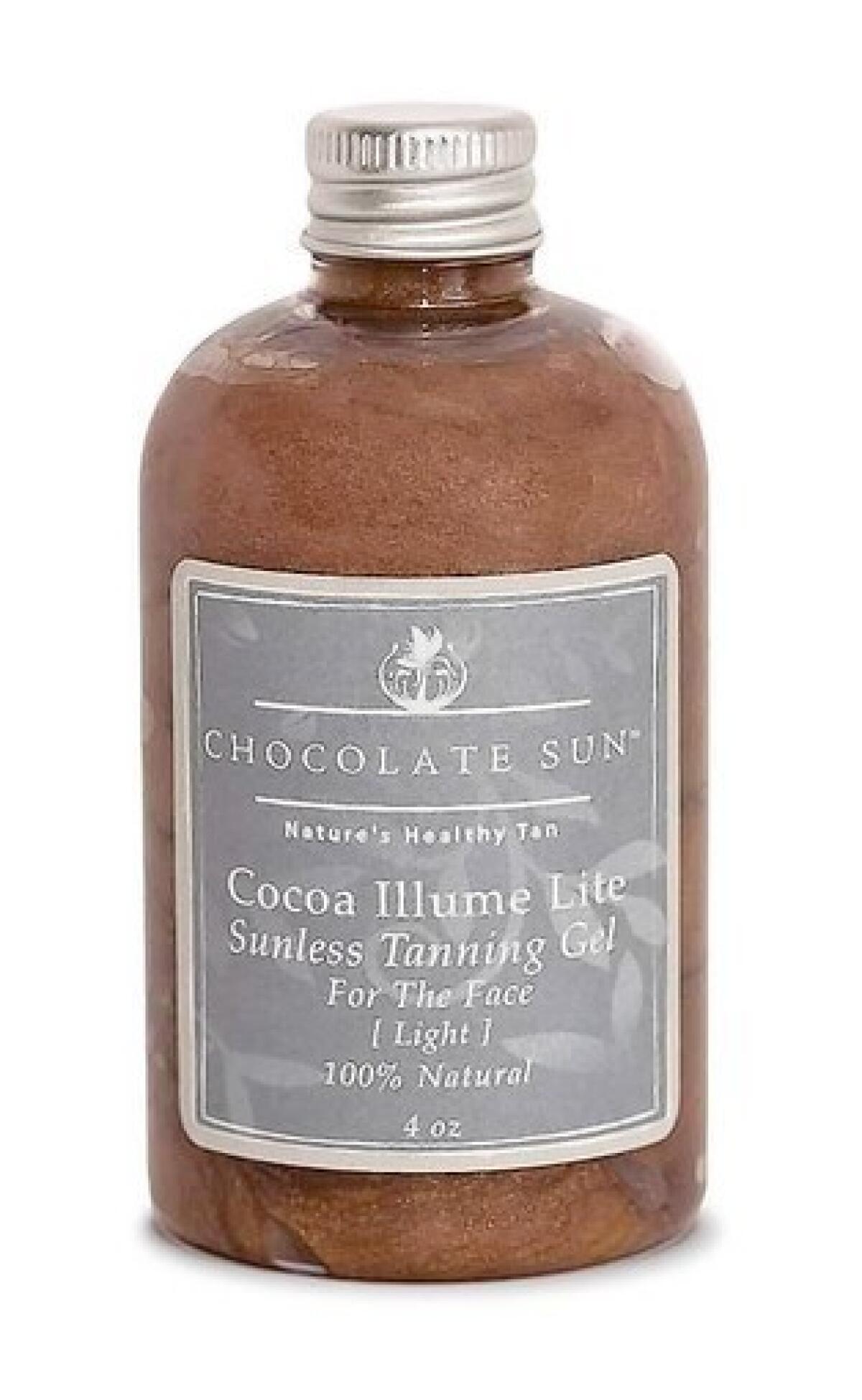Organic self-tanners offer a natural alternative to chemicals and harsh sun

Not so long ago “working on a tan” meant a choice among baking in the sun, broiling on a tanning bed or slathering on a chemical-laden self-tanner that left streaks, smelled awful and imbued skin with a distinct fake orange glow.
Today, there’s another choice.
All-natural and organic ingredients have arrived inself-tanningformulations that rely on sugar beets and various natural oils to help gradually darken the outer layer of skin. These eco-friendly products are free of many of the no-no components other all-natural skin care products avoid, such as parabens, synthetics, fragrance, colorings and dyes.
Instead, they’re filled with oils from nature — sunflower, sweet almond, coconut and jojoba — shea butters, sugar beets and various other natural and sometimes organic ingredients including green tea, vanilla, even coffee and cocoa. (A side benefit is that many of these new self-tanners smell wonderful.)
For now, the all-natural and organic self-tanner circle of products is relatively small. But it is surely set to expand within an aggressively growing self-tanning industry, which is one of the 10 fastest growth industries in the U.S., according to Los Angeles-based research firm IBISWorld. The firm reports a 22.7% annual growth rate for self-tanners from 2006-2011, with more than $516 million in sales last year and annual growth rate projections from 2011 to 2016 of 12.8%.
How do self-tanners work? Most use a chemical called Dihydroxyacetone (or DHA), which is derived from sugar beets, as the main ingredient to turn the skin a darker color. It’s a colorless substance that reacts with the outermost layer of the skin, interacting with the skin’s amino acid proteins to produce a brownish color that looks similar to a natural tan. Because skin naturally sheds cells over a period of a week or two, the tan fades over time.
Coppertone first used DHA (whose coloring properties were discovered by the Germans in the 1920s) in commercial tanning products when it introduced its QT self-tanner in the 1960s. But the product’s other chemical ingredients left consumers unhappy with the streaking, odor and orange-tinted shades the product produced. In the new self-tanners, most of those problems have been resolved.
There is some controversy about the ingredient DHA, however. According to a 2007 German study, DHA-covered skin had 180% more free radical damage during sun exposure than does bare skin. That means it is imperative to always wear sunscreen over a self-tanner.
Brands include the German Lavera (www.lavera.com), the Seattle area’s True Natural (www.truenatural.com), U.K.-based Green People’s Oy! (www.greenpeople.co.uk.) and Santa Monica’s Chocolate Sun (https://chocolatesun.net).
Chocolate Sun was one of the first all-natural and organic self-tanners on the market. The product sells for $40 per eight-ounce bottle, and Chocolate Sun also offers professional application at its self-tanning salons in Santa Monica and Beverly Hills (a 30-minute session is $55).
Chocolate Sun’s founder and chief executive Susie Phillips offered some tips on how best to apply all-natural self-tanner for professional-seeming results:
Make sure to exfoliate skin as well as possible before application. Removing dead skin before application is key for an even, non-streaky application. Don’t skip this step.
Always apply the lotion to very dry skin. “It’s pretty much the opposite of what you do when applying regular lotion, which is to damp skin,” she said. Wet or damp skin might dilute the product and leave uneven and streaky lines.
Better to go lighter in your initial application as you can always reapply for a darker result. “It’s better not to go overboard especially if this is your first try,” Phillips said. It’s easy to build up darker layers, but it takes a couple of weeks for a too-heavy result to diminish.
Pay attention to instructions, give yourself time and apply carefully. “Give yourself at least 30 minutes to do a proper job, and don’t rush,” Phillips said. “A careful hand is what makes it work. Think of it as like applying eye makeup, carefully and with attention.”
Wait the full 7-10 days in the natural skin cycle before reapplying. And, she said, it is best not to mix products until the full skin sloughing cycle runs its course.




